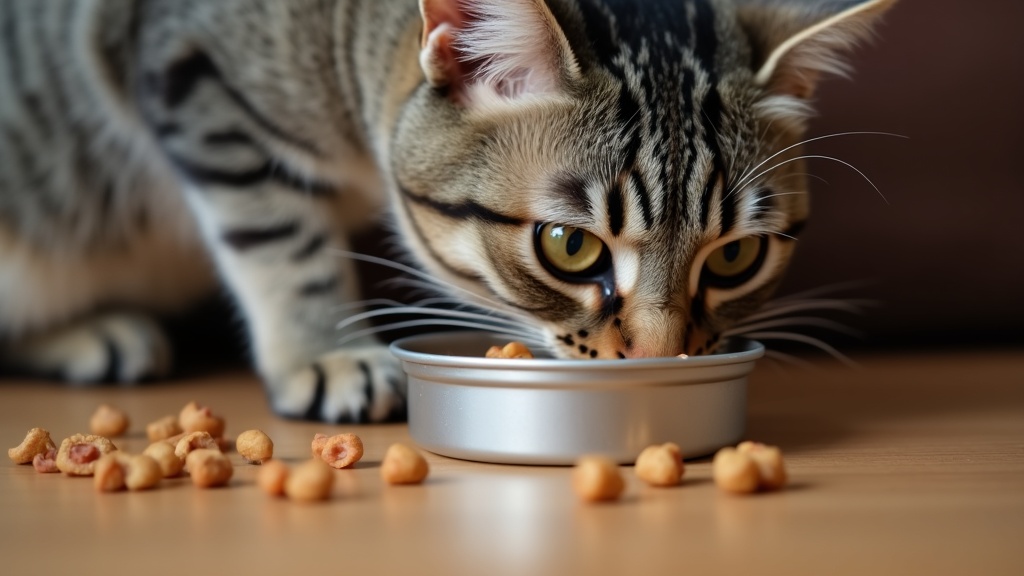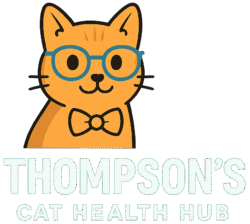If you’ve ever wondered what’s really going on inside a can of wet cat food, let me, Thompson, walk you through the ups and downs with all the flavor and honesty you’d expect from a true feline expert. Wet food holds a special place in my heart (and my food bowl), but there’s a lot to think about before you fill your cupboard with cans. Here’s my paws-on review of everything wet cat food brings to the table, along with the stuff that’s worth watching out for.

What Is Wet Cat Food?
Wet cat food is exactly what it sounds like: cat food that comes in cans or pouches, with a higher water content than dry food. It’s usually soft, smooth, and packed with gravy, sauce, or jelly. If you’re like me, the sound of a can popping open is basically an alarm clock for my stomach.
Known at the pet shop as canned cat food or moist cat food, its standout feature is the moisture level. Wet food can hit around 70-85% moisture, which is way higher than what you get with dry kibble. This difference makes a big impact on how cats—and our humans—experience it every day. The extra moisture changes everything, from texture and flavor to how easily it slides down, especially for us cats who sometimes don’t drink as much water as we should.
Wet Cat Food Benefits: Why It’s So Appealing to Us (And You)
There’s a big reason wet cat food is an instant favorite in my book. It isn’t just the texture; it’s about what it does for me, health-wise and flavor-wise. Here are some things I really like:
- Packed with Moisture: Wet food keeps me hydrated without me having to visit the water bowl after every meal. Perfect for cats who, like me, think water is just for the occasional paw dip.
- Smells and Tastes Amazing: It’s no secret we’re obsessed with sense of smell. Wet food delivers a punch of aroma and flavor that dry kibble sometimes misses out on.
- Gentle on Teeth: If you know a senior cat, or you’ve ever had a sore tooth yourself, you know chewing tough stuff can be rough. Wet food is really soft, great for older cats or those with sensitive mouths.
- Helps with Portion Control: Since it’s served in cans or pouches, it’s pretty easy to get the right amount, especially if I’m sneaking snacks between meals.
- Higher Protein Options: Plenty of wet foods pack a solid protein punch, which helps keep my fur shiny and my muscles ready for any daring window leap.
- Encourages Picky Eaters: Got a cat who turns up their nose at everything? Wet food usually gets even the most stubborn eaters interested, at least for a sniff.
Another bonus is that wet food can often help cats who need to gain a little weight, because the tasty flavors and texture tempt us to eat more. Plus, for those who want to mix in medicines or supplements, wet food is a great way to hide the stuff we’d normally avoid. My personal favorite trick? Letting my humans think I didn’t notice that pill crumbled in with the chicken gravy!
Potential Drawbacks: What Your Cat Might Not Tell You
It’s not all smooth gravy and tender bites. Here are a few things I’ve noticed my humans have to deal with when it comes to wet food:
- Can Spoil Quickly: Wet food goes bad if you leave it out too long. In my house, if I don’t finish it right away, it’s straight to the fridge, which means no midnight second dinner.
- More Expensive Than Dry Food: Those cans and pouches add up fast. Wet meals usually cost more per serving than a scoop of kibble.
- Create Messier Feedings: I get a little too excited sometimes, and my whiskers, chin, and even the floor get covered in gravy. You might want to keep some wipes handy.
- Open Cans Need Storing: If I don’t finish my meal, my humans have to find a lid or a container and clear fridge space.
- Dental Health Considerations: Because wet food is super soft, it doesn’t help scrape plaque off teeth as dry kibble can. Some cats need extra dental care if they eat mostly canned food.
- Bulkier Packaging Waste: All those cans and pouches pile up in the recycling bin and can really fill it up.
It’s also good to note that some wet foods are made with extra fillers or artificial flavors. Always check the ingredients so you know what your cat is getting. My advice? Stick to recipes you can recognize, like tuna in gravy or salmon pate, and watch for anything odd or unpronounceable.
Real-World Examples from the Cat Side of Things
I’ve seen all kinds of cats approach wet food differently. Take my friend Percy, the picky cat from next door: He refused dry food for years, barely eating enough to keep up a proper nap routine until his humans tried chicken pate from a can. Now he eats like me, fast and with no complaints.
Or Molly, my cousin who’s a bit older. Dry food made her mouth hurt, but wet food gave her an easy meal that kept her energy up and her weight in a safe range. For cats like Molly, these soft meals make all the difference in daily comfort.
BUT, I have a kitten buddy, Jinxy, who started eating only wet food and had a few tartar troubles until their vet suggested introducing some dental treats. That balanced things out for Jinxy and made his humans feel a lot better.
I also know some cats who love to experiment with a mixed menu, especially those who get bored. My neighbor Skye gets different flavors each day—tuna Thursday, salmon Saturday, chicken Sunday. Keeps the bowl interesting and the tail wagging. Just remember that mixing up meals needs to be done gradually to avoid upsetting any sensitive tummies.
How Wet Food Stacks Up to Dry Food
Wet and dry food both have their place in a cat’s bowl. Here’s how I view the major differences, straight from my own taste tests and plenty of kitchen research (with supervision):
- Hydration: Wet food wins in the water department, making it a solid choice for cats who ignore their water bowl.
- Convenience: Dry food is way easier to leave out for a longer time. My humans can fill my bowl with kibble if they’re going out, and it won’t go mushy.
- Spoilage: Wet food just doesn’t keep long once it’s opened. Dry food stays fresh in the bowl or the bag for days.
- Dental Perks: Crunchy kibble helps with scraping some plaque, which my vet says can keep my teeth healthier if I’m not a fan of tooth brushing sessions.
- Cost and Storage: Dry food takes up less space, lasts longer, and usually costs less. Wet food needs more fridge spots and, as I know, eats up the grocery budget.
The combo approach, a bit of each, works out for a lot of homes. It keeps meals interesting for cats like me and can hit more health goals too. Some people opt for wet food in the morning and kibble at night—or the other way around. As long as total calories stay in check, there’s real value to mixing things up for texture and taste.
Tips for Feeding Wet Cat Food Like a Pro
- Pick High Quality Foods: Look for ingredient lists with real meat and fish. Less filler means better taste and probably better nutrition for picky eaters like me.
- Serve at Room Temperature: Let a refrigerated can warm up for a few minutes so the aroma and texture are better. My whiskers can tell if it’s too cold.
- Use Split Meals: Wet food is perfect for dividing into several smaller meals. It’s more like snacking, which is my favorite hobby.
- Keep Everything Clean: Wash bowls daily. Sticky leftovers aren’t just gross; they can attract ants and make me turn my nose up at dinner.
- Rotate Flavors and Textures: Some cats want variety. My own favorite changes every week, so mixing up pate, chunks, and shreds keeps meals interesting.
- Check Expiration Dates: Wet food can go off if stored too long. Make it a habit to use the oldest can first, so everything stays as fresh as possible.
- Measure Out Servings: Overfeeding can be easy with tasty wet food, so keep an eye on portions and adjust based on your cat’s weight or appetite changes.
Things to Think About Before Making the Switch
- Talk to your vet, especially if your cat has any health issues. Some medical needs (like kidney troubles) might call for more moisture, while others could have special requirements.
- Consider your budget. Wet food often costs more over the long run, and costs can add up if you have more than one of us running around.
- Think through your daily routine. If you’re busy or not home often, dry food’s convenience is pretty handy. Wet food needs more real-time attention and serving prep.
- Storage counts. Make sure you have fridge space or you’re okay with tossing leftovers after a couple of hours. Keeping things organized can help you avoid waste and keep all of us happy.
- Gradual transitions are important. If you want to switch your cat, do it slowly over at least a week, adding more wet food each day rather than all at once. This keeps everyone’s stomachs settled and ensures a smooth food shift.
Frequently Asked Questions
Q: How much wet food should most cats eat in a day?
That depends on your cat’s size, age, and activity. If you’re unsure, ask your vet or check the can label. I usually get several small servings, which keeps me satisfied.
Q: Is it safe to mix wet and dry cat foods?
Absolutely. Many cats get the best of both worlds that way, as long as the total calories don’t go off the charts. Mixing also helps keep things interesting in the bowl.
Q: Can kittens eat wet cat food?
Yes! Wet food is gentle on tiny teeth and delivers lots of moisture. Just make sure it says “for kittens” if you’re shopping for the younger crowd.
Q: How do I store leftover wet food?
After opening, unused wet food should be covered and put in the fridge. Use a can lid or plastic wrap to keep it sealed. Try to use leftovers within one or two days for best freshness and to avoid unpleasant smells in the fridge or bowl.
Final Thoughts from Thompson
Wet cat food definitely earns its spot in my mealtime rotation. It’s moist, tasty, and gentle, and for a lot of cats like me, it brings health perks and excitement back to dinner. It pays to watch out for the messy bits and storage needs. Still, a mix of wet and dry food usually keeps us happy, healthy, and licking our bowls clean. Here’s to hoping your cat finds their favorite meal soon. Happy feeding!
